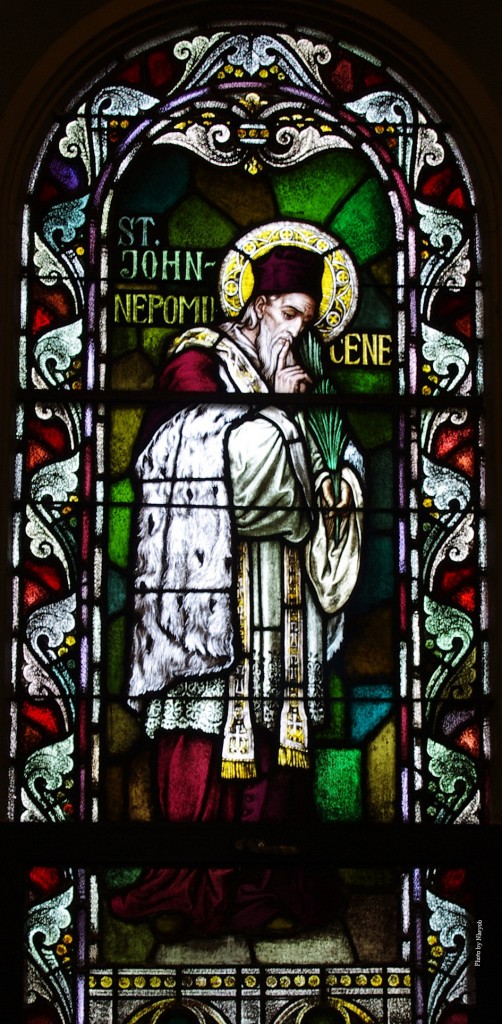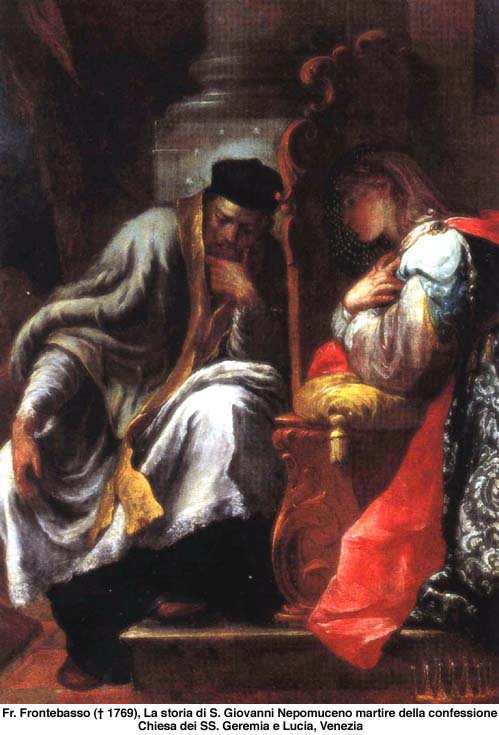We need not extend ourselves on the more “official” aspects of the saint—protomartyr of the sacrament of Confession and patron saint of confessors, which helped the Church exalt the sacrament of Penance against its detractors; exterminator of the heresies against Protestantism; protector of Bohemia and the Catholic Empire—all this could have a political connotation. But the veneration of John Nepomucene took on other forms too, of interest to groups or individuals from all social classes.

When the tomb of St. John Nepomuk was opened in 1719, all that remained was his tongue, which is still incorrupt in St. Vitus Cathedral in Prague. He is pictured with his finger to his lips, as if urging silence, to show that he kept the Seal of Confession, although it cost him his life.
The protection of people’s reputation naturally fell to him who safeguarded the queen’s. Numerous miracles are recorded on this account: the saint intervenes so that the truth comes to the forefront, saving individuals who were unjustly accused from infamy. Nobles—for whom honor is the preeminent virtue—assembled in Confraternities of Good Name, under the patronage of the saint, such as the Confraternity of the Buona Fame, founded in Rome, in 1737, whose members visit the poor and those imprisoned, and who come to the aid of “all those who are calumniated.”* The defender of the tribunal of Penance was invoked, to obtain the “just decision of lawsuits.” As the veneration of the saints progressed, it is not rare that from the invocation and the confraternities of devotion, one moves on to the patronage of professions. John Nepomucene was no exception to the rule and those whose profession entails the attack or defense of another’s honor, the men of law, placed themselves under his protection, praying so as to act solely in full justice.
* Yves Lasfargues, Le culte mondiel de saint Jean Népomucène aux XVIIe et XVIIIe siècles, thèse de doctorat de 3e. cycle, Faculté des lettres, Paris, 1965, 334. The confraternity of Buona Fame gathered in the church of San Lorenzo in Lucina. In this church one can still find today (verified in January 1991) the “national chapel of Bohemia.” Over the altar is an 18th century statue of John Nepomucene, by Altobelli. This chapel has two paintings: one shows the condemnation of John Nepomuce by Wenceslaus; the other, the discovery of the saint’s corpse when the water level of the Moldau River was low. On the walls are prints of the 1732 briefs of Clement XII granting indulgences.
Paule Lerou, “Le Culte de Saint Jean Népomucène,” Mélanges de l’Ecole française de Rome, Italie et Méditerranée 103 (1991): 289-90. (Nobility.org translation.)
Short Stories on Honor, Chivalry, and the World of Nobility—no. 398










